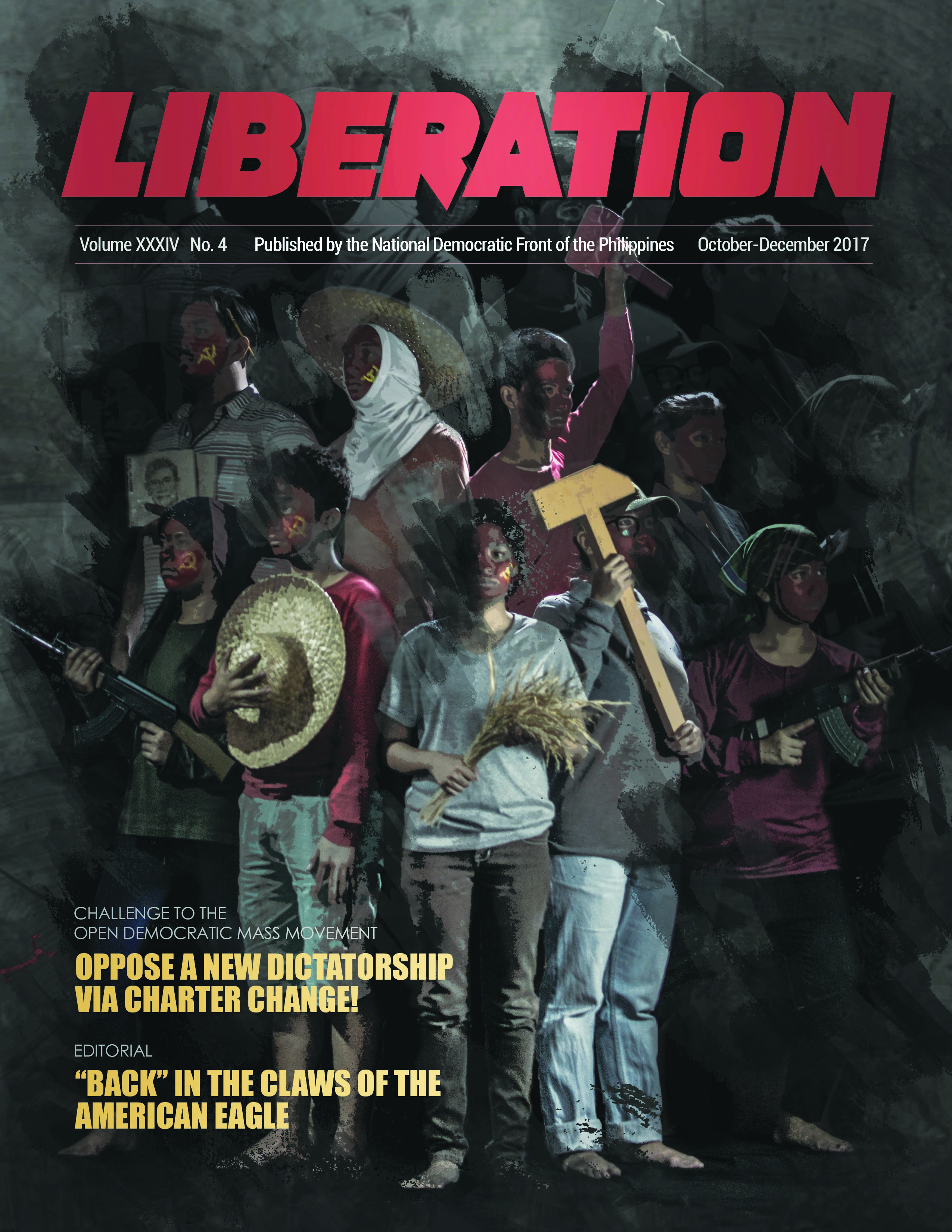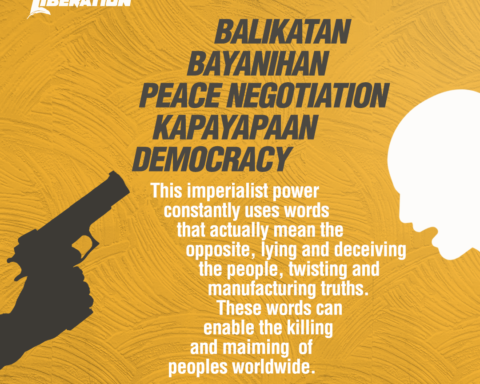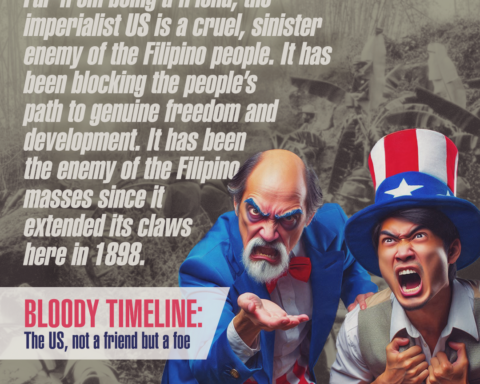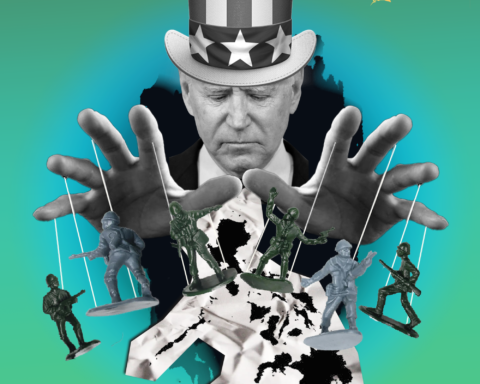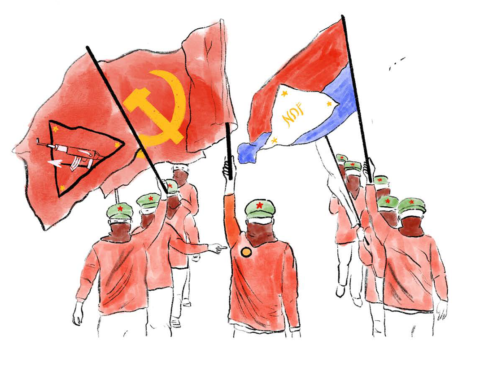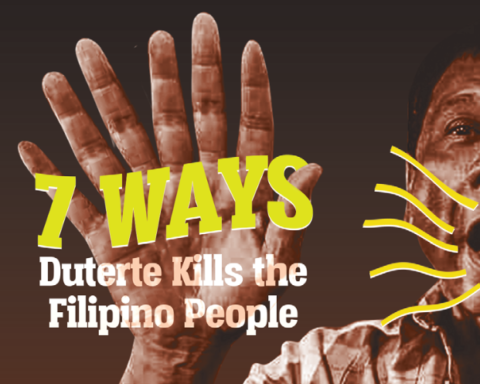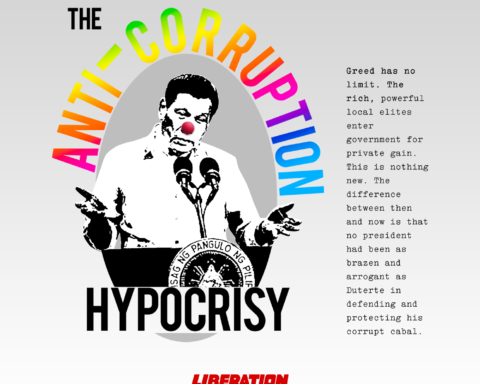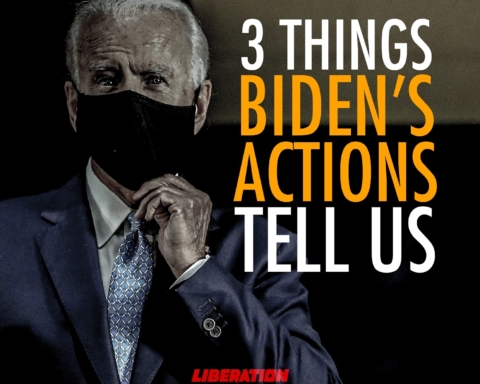Let’s start with a bit of recent history.
In the last quarter of 2001, then US President George W. Bush launched his government’s vindictive global “war on terror” directed at Al Qaeda, the jihadist group that planned and carried out the worldwide-shocking September 11 attacks on the Pentagon and the World Trade Center in New York. Bush called on other nation’s leaders for support, with this foreboding line: “If you’re not with me, you’re against me!”
Bush gave his war this high-minded name: “Operation Enduring Freedom.”
The only Asian head of state to publicly respond was Gloria Macapagal-Arroyo. She lustily welcomed Bush’s designation of the Philippines as the “second front” of that war. “Oplan Enduring Freedom-Philippines (OEF-P)” opened up the country to the large-scale reentry of US troops (US Special Operations Command Pacific deployed 1,500 soldiers to support the government in fighting the Abu Sayyaf and Jemaah Islamiyah).
Of course, US troops had been in the country since 1946 with two large bases: Clark Air Base and Subic Naval Base. But in 1991 the American troops were practically ousted, after the Philippine Senate decided to end the RP-US Bases Agreement. Their comeback was facilitated by the deceitfully-crafted RP-US Visiting Forces Agreement (VFA) which, under new leadership, the Senate ratified in 1999.
Since January 2002, a new mode of annual joint RP-US military exercises was begun. Dubbed as Balikatan, it prescribed joint exercises in actual war zones, particularly in western Mindanao. Teams of fully-armed American soldiers, as “advisers” and “trainers,” accompanied Armed Forces of the Philippines (AFP) troops in combat operations mainly against the Abu Sayyaf.
A full-scale war to wipe out the Abu Sayyaf was subsequently planned. The US set up an all-American Joint Special Operations Task Force (JSOTF) inside a Philippine base in Zamboanga City. Batches of US troops, 600 per, were deployed on rotating tours of duty such that, at any one time, there were that number of US soldiers in the country.
That arrangement ended in February 2015. The US removed its JSOTF in the wake of the botched anti-terrorist operation, involving US military assistance, which ended up in the Mamasapano massacre of 44 officials and men of the PNP Special Action Force. But the 14-year drive to wipe out the Abu Sayyaf failed.
Fast forward to 2017.
On September 1 last year, US Defense Secretary James Mattis designated—in total secrecy both in the US and the Philippines—“Operation Pacific Eagle-Philippines”(OPE-P) as the Trump administration’s “overseas contingency operation” in Southeast Asia. Unlike in 2001, when Bush and Arroyo went high profile, this time Donald Trump was silent. So was Rodrigo Duterte.
As detailed in a quarterly report to the US Congress by the US Lead Inspector General, Glenn A. Fine, (dated Oct. 1-Dec. 31, 2017), what Mattis officially launched was a bilateral comprehensive campaign “to assist the (AFP) in their effort to isolate, degrade, and defeat affiliates of the Islamic State (of Iraq and Syria) and other terrorist organizations that do not profess a connection to ISIS (emphasis ours).”
(This editorial’s title uses the word “back” to reflect Duterte’s abandonment of his erstwhile public stance to “move away from the US.” In his speech in Tokyo, Japan, in October 2016, he reiterated that he would abrogate executive agreements with the US, if necessary, to pursue an independent foreign policy. He said: “I want, in the next two years, my country free from the presence of foreign military troops. The Philippines can live without the assistance of the US…”).
OPE-P is fully funded by the US. In 2017, the US Department of Defense (DoD) provided US$16 million from its Intelligence, Surveillance and Reconnaissance Fund. Its 2018 and 2019 budgets have not yet been determined, pending completion of the funding requirements being identified by the DoD, the Pacific Area Command (PACOM), and US military departments concerned.
It has no termination period. It will end, says the report, “when the AFP no longer requires US military assistance to address its internal terrorist threat.” Given the persistence of the Abu Sayyaf, the Maute group, the Bangsamoro Islamic Freedom Fighters—much more, of the New People’s Army (in irrational anger in December, Duterte declared the NPA as a “terrorist organization” along with the Communist Party of the Philippines)—when can the AFP say it no longer need US aid?
The report points out that, “as with all US military operations in the Philipines, OPE-P is conducted at the request of the Philippine government.” US and Philippine military leaders, it adds, meet annually at 4-star level to discuss the scope of the coming year’s bilateral defense cooperation and training programs.
Under OPE-P, the report notes, the US special operations forces continue to be “advising and assisting the AFP.” All military operations are supposedly conducted “by, with, and through Filipino forces.” This qualification, used since the first Balikatan exercises, is intended to shield the US “advisers” and “trainers” from being called to account for human rights violations in the conduct of military operations.
Obviously sanitized, the report to the US Congress has not dwelt on the political and geopolitical implications of the OPE-P’s implementation. Let’s therefore look at some of the reactions to its launching in September.
Prof. Roland Simbulan of the University of the Philippines, who has written several books and articles about US military intervention in the country and elsewhere, said:
“(OPE-P) marks a new era of US military intervention in the Philippines. Internally, it is directed against the Philippine Left and externally, (at using) the Philippines as springboard to reassert US military power in the Pacific. It is Trump’s way of supporting the creeping authoritarianism in the country while using US military force and assets to make sure that Duterte does not change [his stand] on US military presence [in relation to China].”
Sociology Prof. William Robinson of the University of California concurred with Simbulan’s view. He backstopped it by citing historical precedents when the US used the Philippines as “principal rearguard and staging point” for its interventionist wars against North Korea (1950s) and against North Vietnam (1960s-70s). “The US military presence was also the hinge around which the counterinsurgency war was organized against the NPA in the 1970s and 1980s.”
Prof. Jose Ma. Sison, chief political consultant of the NDFP peace negotiating panel, observed:
“It is very clear to Trump that the Duterte regime is securely a puppet of US imperialism. All the major treaties, agreements and arrangements that have tied the Philippines to the US economically, politically, culturally, and militarily remain intact. Trump’s comment reflects the fact that the US dominates the Philippines as its ‘most prime real estate’ in Southeast Asia and is an important forward base of the US in the East Asia-Pacific region.”
As to the NPA’s response to OPE-P, national spokesperson Ka Oris undauntedly stated:
“Expanding the mass base, strengthening and expanding the NPA through trainings and massive recruitments, making sure the revolutionary work is done in a comprehensive manner—to ensure that the guerilla forces and bases can withstand and outlast the relentless attacks from enemy forces.”
These, Ka Oris said, must be done “alongside the strengthening and adaptation of the NPA and the people to US sophisticated weapons, such as surveillance and attack drones, that the (AFP) forces are already using against civilian communities.”�Last words from Prof. Sison:
“It would be politically and financially costly, at the expense of the people, if the Duterte regime relies solely on its ‘all-out-war’ policy, Oplan Kapayapaan and Operation Pacific Eagle-Philippines and tries to bribe the AFP, PNP and paramilitaries to go on a rampage of mass murder with P25,000 for the killing of every suspected or maliciously listed ‘NPA member.’ ”
Let’s follow through how this revived US imperialist “contingency operation” will proceed, and be militantly ready to expose and oppose every anti-people project it will launch.
